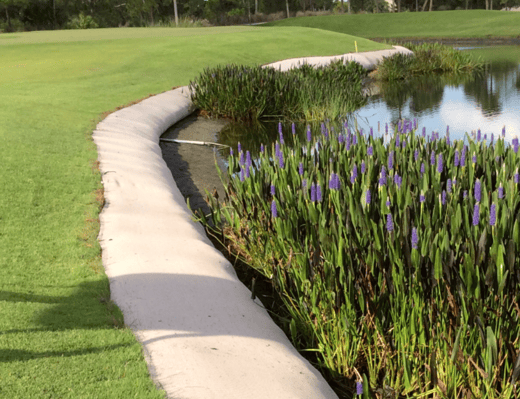Learn how to identify erosion and explore the effective methods to repair damage. by SOLitude Lake
Learn how to identify erosion and explore the effective methods to repair damage.
Identifying Signs of Shoreline Erosion
What Does Shoreline Erosion Look Like?
Shoreline erosion is one of the most difficult, if not impossible, problems for pond owners to control. And while a new shoreline can be engineered, proactive management is much easier and more cost-effective. To keep your shoreline healthy for as long as possible, it’s important to understand the signs of shoreline degradation – some more obvious than others.
Shrinking appearance
Imagine digging a small hole in your yard. What would it look like a month later? How about a year? Chances are, it will look indistinguishable from the surrounding earth because it has filled back in. Your pond undergoes the same process, though it may take decades before you notice that its capacity to hold water has decreased since the first time you saw it.
Steep drops, islands, and peninsulas
Deep ruts and steep, crumbling drop-offs are an obvious sign of erosion, but the appearance of “peninsulas” and irregular contours along the bank may be an early clue of degradation. The formation of islands, often covered in emergent plant growth, can also indicate that the waterbody is unevenly filling with sediment.
Muck and flooding
Once sediment has eroded into a waterbody, it tends to stay there. Over time, it will become incorporated with pollutants, animal waste, and decomposing plant matter, creating a thick muck on the bottom. As depth and volume slowly decrease due to the build-up, there is a greater risk of flooding during heavy rainstorms.
Exposed pipes or root systems
As water levels drop and shoreline deterioration worsens, it’s not uncommon for roots and stormwater pipes to become visible. In addition to being aesthetically displeasing, this could result in significant property damage and leave property owners liable for any injuries that occur as a result.

Burrowing animals and sinking earth
Burrowing animals like muskrats, Norway rats, invasive armored catfish, and some mole species are both a sign and a cause of shoreline erosion. Not only do the channels they dig weaken the shore and increase the risk of collapse, but they also make it easier for water to escape.
Monitoring for Erosion Damage
Erosion is a natural phenomenon that occurs in every waterbody, but human activity can significantly speed up the process. Partnering with an aquatic expert to implement proactive solutions is essential to maintain a stable shoreline.
In addition to regular monitoring, professionals recommend cultivating a buffer of native vegetation around the entire perimeter of a waterbody, allowing them to grow approximately knee-high to lessen the force of rainwater as it washes over the shoreline. Beneficial buffers also have complex root systems that help hold soil in place.







